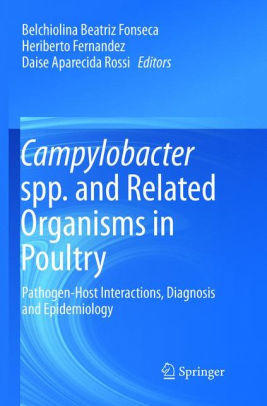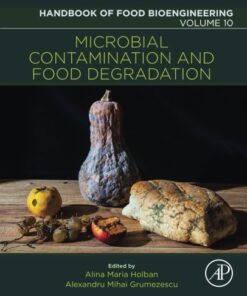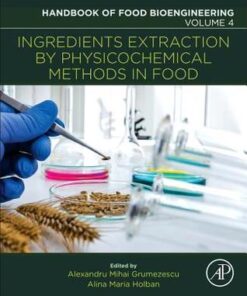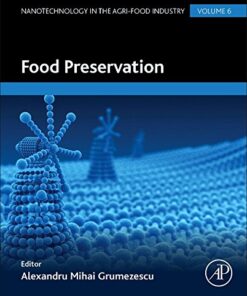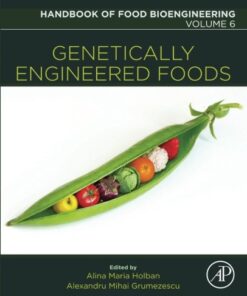(eBook) Campylobacter spp. and Related Organisms in Poultry by Belchiolina Beatriz Fonseca
$18.00
Download instantly Campylobacter spp. and Related Organisms in Poultry – Pathogen-Host Interactions, Diagnosis and Epidemiology by Belchiolina Beatriz Fonseca, Heriberto Fernandez, Daise Aparecida Rossi. It is ebook in PDF format.
ISBN-10: 3319806831 ISBN-13: 9783319806839
Preview
This is the PDF eBook version for Campylobacter spp. and Related Organisms in Poultry – Pathogen-Host Interactions, Diagnosis and Epidemiology by Belchiolina Beatriz Fonseca, Heriberto Fernandez, Daise Aparecida Rossi
Table of Contents
Chapter 1
About the Campylobacter spp
Belchiolina Beatriz Fonseca, Heriberto Fernandez, Daise Aparecida Rossi, Patrícia Giovana Hoepers, Roberta Torres de Melo
Members of the Campylobacter genus are gram-negative, microaerophilic, small bacillus with a polar flagellum. Their movement has a typical corkscrew characteristic. There are many species associated with different diseases. This chapter describes the taxonomy, genetic structure and general characteristics of the Campylobacter genus focusing on thermophilic species and/or those that colonize the intestinal tract of birds.
Chapter 2
Isolation and identification of Campylobacter spp. in poultry
Omar A. Oyarzabal and Heriberto Fernández
Poultry products, especially chicken meat, continue to be important sources of campylobacteriosis in humans. This chapter reviews the current methods used for the isolation and identification of Campylobacter spp. from chicken products. Emphasis is placed on the enrichment protocols, the plate media that are most costly efficient for isolation purposes and the current approaches to identification of isolates to the genus or species level. The current methodology used in some South American countries to detect Campylobacter spp. from poultry products is also summarized.
Chapter 3
Colonization of Campylobacter jejuni in poultry
Belchiolina Beatriz Fonseca, Álvaro Ferreira Junior, Gustavo Medina, Marcelo Emilio Beletti, Eliane Pereira Mendonça
Campylobacter jejuni colonizes the poultry intestinal tract in high quantity and can establish a commensal behavior in the host. However, it has been suggested a pathogenic behavior of C. jejuni in chickens. Pathogen-associated virulence factors and host immune response can influence the chicken intestinal colonization and the pathological and clinical manifestations. This article describes the main structures involved during the colonization of C. jejuni in poultry and the possible consequences of the pathogen and host interactions for poultry.
Chapter 4
Immune response after Campylobacter infection in poultry
Álvaro Ferreira Junior, Edson Campos Valadares Junior, Belchiolina Beatriz Fonseca
This chapter describes about the host immune responses against Campylobacter spp. We compare chicken and mammal host innate and acquired immune response against the bacterium. In addition, we describe the role of maternal antibody protection in offspring’s early life. We present the intriguing phenomena of pathogen and host relationship and the apparent post-infection host immune tolerance. In this context, some questions should be highlighted: are the control procedures for Campylobacter jejuni-infection in chickens relevant to reduce C. jejuni-infection in human hosts? Are the currently used C. jejuni-vaccines protective against the chicken infection? Is an alternative procedure the administration of passive oral immunization using powdered antibodies to control chicken and human C. jejuni infection? We also discusses about the possible potential of antigenic targets to the vaccine production.
Chapter 5
Campylobacter-host cell interactions
Claudio Silva, Marlus Alves Santos, Flávia Alves Martins
This chapter begins with a historical background of evolutionary origin of the cells since the emergence addressing the endosymbiosis theory by which prokaryotes gave rise to the first eukaryotic cells, describes the relationship between existing cell types that may have evolved with predation to mutualism or parasitism. Also, discuss some interactions between parasitic unicellular organisms and its cell host, taking into account the dynamic actin cytoskeleton and the immune response resulting from the invasion. Finally analyses the case of C. jejuni, its types of invasion routes, intracellular traffic, virulence factors and colonization of poultry cells.
Chapter 6
Epidemiology of Campylobacter spp. in farms
Eliane Pereira Mendonça, Belchiolina Beatriz Fonseca, Guilherme Paz Monteiro
Chickens are recognized as natural hosts of Campylobacter and infected poultry carry a high pathogen load in their gastrointestinal tract. There are large gaps in our understanding about factors leading to colonization of Campylobacter and subsequent transmission among birds, once that the source of Campylobacter in chickens and specific mechanisms for their entry into the flock is not fully clear yet. This chapter summarizes the epidemiology of Campylobacter in poultry flocks and brings current issues on the subject.
Chapter 7
Control of Campylobacter spp. in commercial poultry production
Omar A. Oyarzabal and Steffen Backert
This chapter summarizes the intervention strategies that have been applied in the poultry industry to reduce the contamination of poultry products with Campylobacter spp. For brevity and to provide a practical review, this report will focus mainly on the interventions that have found a commercial niche and are used by the poultry industry. In addition, this report summarizes the potential of vaccination as the next generation intervention for the control of Campylobacter spp. in live commercial poultry.
Chapter 8
Survival strategies and adaption of Campylobacter spp. in poultry industry
Roberta Torres de Melo, Daise Aparecida Rossi, Guilherme Paz Monteiro
Understanding the epidemiology of Campylobacter and the main challenges in its control, this chapter brings a review of the mechanisms used by these microorganisms to adapt and survive in the poultry industry. Despite the apparent campylobacters fragility to the environmental conditions, this section summarizes how this agent is flexible and can adapt their metabolism and growth level in industry environment, addressing mechanisms such as, their genome modulation, tolerance to high and low temperatures and the capacity of biofilm formation. These skills are discussed considering the potential of different behaviors that can explain their ability to survive and multiply in poultry industry and affect the prevalence of Campylobacter in the final product.
Chapter 9
Antimicrobial resistance of Campylobacter spp.
Heriberto Fernandez
Antimicrobial resistance of infectious agents is a growing public health problem. This chapter describes the main antimicrobial resistance problems in developed and developing countries and the possible relationship between the resistance of Campylobacter strains found in poultry and humans. Determining the level of the problem is essential for control, formulating and monitoring an effective response to antimicrobial resistance.
Chapter 10
Non-jejuni coli Campylobacter spp. and related organisms in poultry, and their relevance in human and animal disease
Albert J. Lastovica
The vast majority of studies of Campylobacter spp. which have been done on poultry and especially chicken have focused only on Campylobacter jejuni and Campylobacter coli. Campylobacter spp. other than C. jejuni and C. coli such as C. lari, C. upsaliensis and C. avium, as well as species of the related genera of Arcobacter and Helicobacter for example, Arcobacter butzleri, and Helicobacter pullorum are increasingly being found in poultry. The presence and disease potential of these organisms in human and animal disease is gradually being recognized. The role of the non-jejuni/coli Campylobacter species in poultry is still to be completely elucidated. They may have been undetected or under detected due to less than optimal cultural conditions for these generally fastidious bacteria. This chapter provides a comprehensive survey of what is known of the non-jejuni/coli Campylobacter and the related Arcobacter and Helicobacter spp. in poultry.
